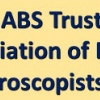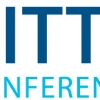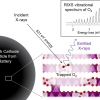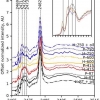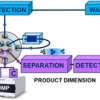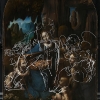News
X-ray Spectrometry News
Applications are invited for two awards administered by the ABS Trust.
Researchers have developed a method to modify the spectral width of extreme-ultraviolet light. By employing a novel phase-matching scheme in four-wave mixing, they can compress the spectral width of the initial broadband light by more than hundred times.
Scientists at Tokyo University of Science have combined SERS and XRF to distinguish between differently dyed individual hair strands for forensic investigations.
Shannon Postma has been appointed as new Managing Director of Specac Limited.
Professor Peter Lay from the University of Sydney has been awarded the Australian Synchrotron Lifetime Contribution Award by ANSTO, the Australian Nuclear Science and Technology Organisation.
Mass spectrometry, XRF and NIR spectroscopy are being used together with voltammetry to determine the origin of ancient ceramic fragments.
Shimadzu opened a branch office in Denmark in September, providing local support.
Researchers have developed a novel ultrafast coherent light source in the extreme ultraviolet (XUV) wavelength region with multi-MHz range repetition rates by utilising intracavity high-order harmonic generation (HHG) in a Yb:YAG thin-disk mode-locked oscillator.
Oxford Instruments plc and Bruker Corporation have announced that they have reached a settlement on a patent related issue with Bruker’s Cube product.
Researchers have been able to fully identify the nature of oxidised oxygen in the important battery material, Li-rich NMC, using RIXS and 17O MAS NMR spectroscopies.
New atomic spectroscopy analyses reveal the origin of Stonehenge’s giant sarsen stones as West Woods on the edge of Wiltshire’s Marlborough Downs, about 15 miles to the north.
Synchrotron-generated X-rays can be used to probe what happens when liquids solidify into disordered solids, a process that has puzzled physicists for decades.
XANES has helped explain how ultramarine paint was traditionally made and offered an insight into the problem of “ultramarine disease” suffered by some paintings.
Applications are invited for these prestigious awards administered by the Association of British Spectroscopists (ABS) Trust.
A new research project in partnership between academia, companies and the Netherlands Forensic Institute to develop ways to chain analytical techniques together to gain complementary information.
Shimadzu has opened a branch office in Sweden, which will market Shimadzu’s full range of analytical instrumentation solutions.
XRF mapping, infrared and hyperspectral imaging reveal early designs for Leonardo da Vinci’s The Virgin of the Rocks.
Specac opens new headquarters including manufacturing, office and demonstration facilities.
A team of researchers led by the Max Born Institute has provided the experimental and theoretical groundwork to interpret X-ray magnetic circular dichroism spectroscopic signals from magnetic materials.

